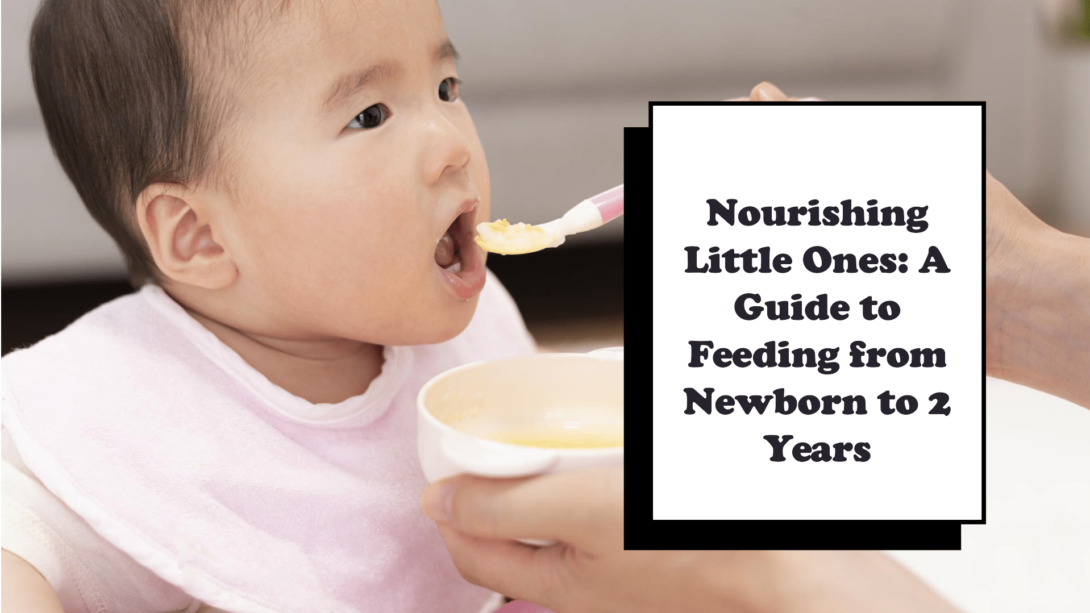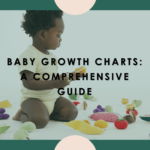Feeding and nutrition play a vital role in the growth and development. Feeding serves the same purpose as appropriate sleep. As your little one continues to explore the world and develop new skills, providing them with the right foods and nutrients is essential. In this age-by-age guide, we will cover everything you need to know about feeding your 2-year-old, from introducing first foods to establishing healthy eating habits.
I. Feeding Babies:
When it comes to introducing solid foods to babies, it’s important to start with the right choices. Begin by offering soft and pureed foods that are easily digestible, such as mashed fruits, vegetables, and cereals. Gradually introduce a variety of textures and flavors to expand their palate. Remember to pay attention to their nutritional requirements and consult with a healthcare professional for personalized guidance.
II. Feeding Your One-Year-Old:
As your baby reaches the one-year mark, they are ready to transition from baby food to table food. This transition can be exciting but also challenging. To ensure a smooth transition, offer a balanced diet that includes a variety of fruits, vegetables, whole grains, lean proteins, and dairy products. Balance their milk intake with solid foods to meet their changing nutritional needs.
III. Mealtime Tips for 2-Year-Olds:
Establishing a positive mealtime environment is crucial for fostering healthy eating habits. Create a routine around meals and snacks, allowing your child to develop a sense of predictability. Encourage self-feeding and independence by offering age-appropriate utensils and dishes. If your child is a picky eater, don’t worry. It’s common at this age. Offer a variety of foods and be patient as they explore new tastes and textures.
IV. What to Feed Your 2-Year-Old?

A balanced diet is essential for your 2-year-old’s overall health and development. Ensure their meals include a mix of carbohydrates, proteins, healthy fats, vitamins, and minerals. Include foods from all food groups, such as fruits, vegetables, whole grains, dairy products, and lean meats or plant-based alternatives. Here are some sample meal ideas:
- Breakfast: Whole grain cereal with milk, sliced fruits, and a boiled egg.
- Lunch: Grilled chicken or tofu, steamed vegetables, and brown rice.
- Snacks: Yogurt with fresh berries, sliced cucumbers with hummus, or homemade energy balls.
- Dinner: Baked fish, roasted sweet potatoes, and sautéed spinach.
Remember to cater to your child’s taste preferences while ensuring a well-rounded diet.
V. Portion Sizes and Meal Frequency:

Determining appropriate portion sizes can be challenging. A general guideline is to offer small, frequent meals and snacks throughout the day. Pay attention to your child’s hunger and fullness cues. It’s important not to force them to finish their plate or restrict their food intake. Encourage healthy eating habits by providing age-appropriate portion sizes and avoiding excessive sugary snacks and beverages.
VI. Common Challenges and Solutions:
Many parents face challenges when it comes to feeding their 2-year-olds. Some children may develop food allergies or sensitivities, while others may become picky eaters. In such cases, it’s crucial to seek professional advice and work with a healthcare professional or a registered dietitian. They can provide personalized guidance and strategies to manage these challenges effectively.
VII. Promoting Healthy Eating Habits:

As a parent, you play a crucial role in shaping your child’s eating habits. Be a positive role model by eating a variety of nutritious foods yourself. Limit sugary snacks and beverages and instead, offer healthier alternatives. Encourage your child to try new foods and flavors by involving them in grocery shopping and meal preparation. Remember, consistency and patience are key in promoting healthy eating habits.
VIII. Additional Points to Consider:
- Nutritional milestones and developmental changes during the second year of life.
- Safe food handling and preventing choking hazards.
- The importance of including a variety of food textures to support oral motor development.
- Tips for introducing new foods and flavors to expand a child’s palate.
- Suggestions for incorporating fruits, vegetables, whole grains, and lean proteins into a toddler’s diet.
- Creative ways to make meals visually appealing and enjoyable for picky eaters.
- The role of snacks in a toddler’s diet and healthy snack options.
- Promoting proper hydration and the importance of offering water throughout the day.
- Discussing the use of dietary supplements and when they might be necessary.
- Guidance on when to seek professional help for feeding difficulties or concerns about nutrition.
IX. Conclusion:
Feeding and nutrition are vital components of your 2-year-old’s overall well-being. By offering a balanced diet, establishing a positive mealtime environment, and promoting healthy eating habits, you can set the foundation for a lifetime of good nutrition. Remember to consult with healthcare professionals for personalized guidance and support throughout this journey.
Incorporating these feeding and nutrition tips into your daily routine will help ensure your 2-year-old receives the essential nutrients they need for healthy growth and development. Embrace this stage as an opportunity to introduce new flavors, foster independence, and create a positive relationship with food.
By following these guidelines and seeking professional advice when needed, you can provide your child with the best possible nutrition, setting them up for a healthy future. Remember, every child is unique, and it’s essential to tailor their diet to their individual needs. Enjoy this exciting stage of your child’s development and nourish them with love and nutritious foods.
Share this post: on Twitter on Facebook on Google+


